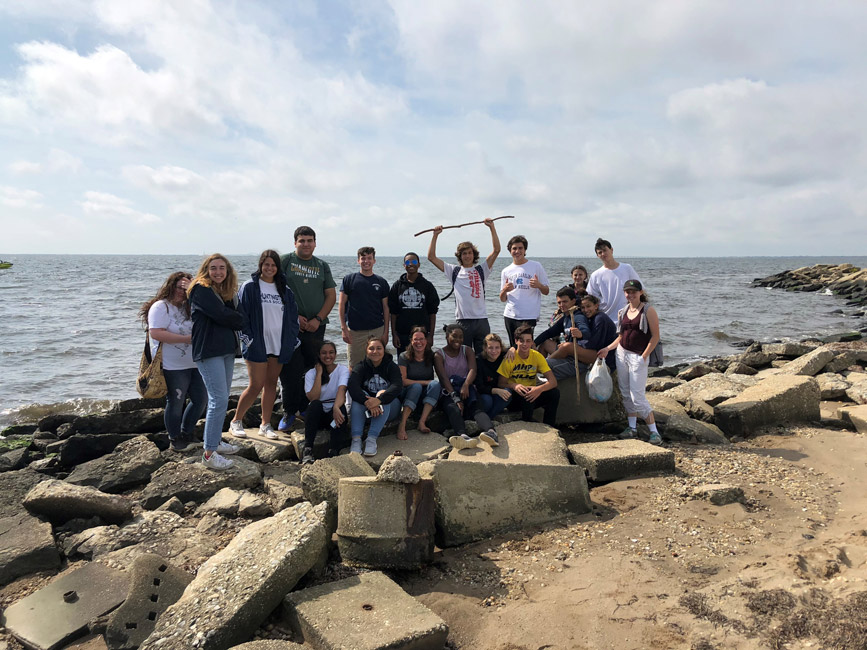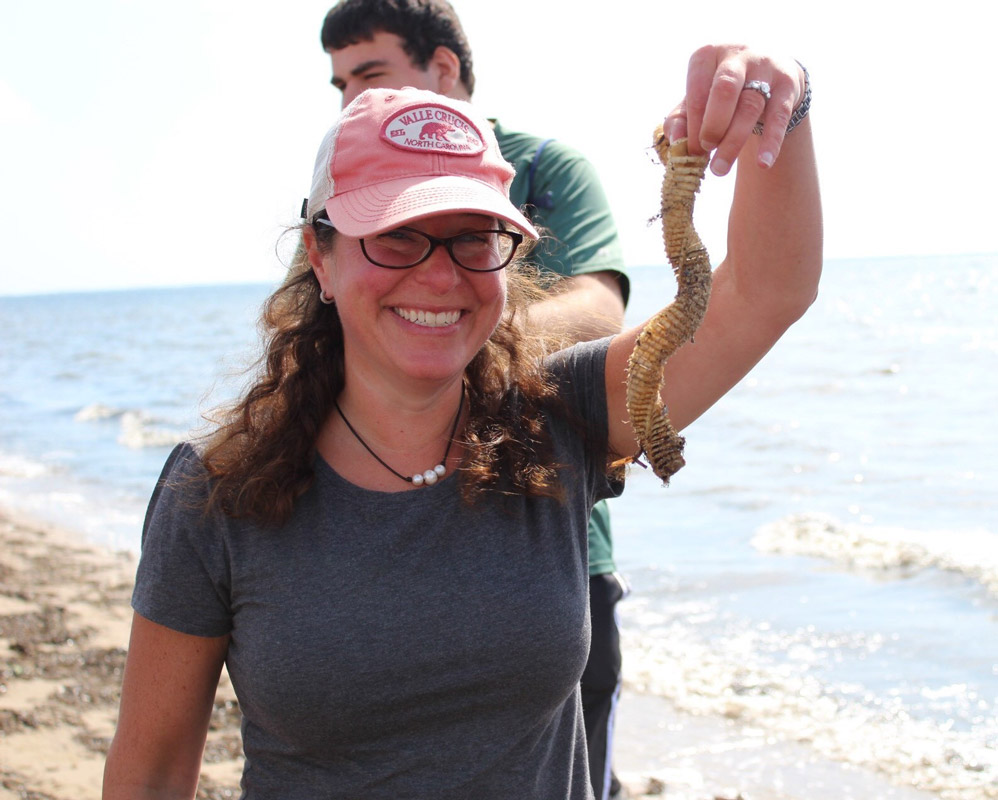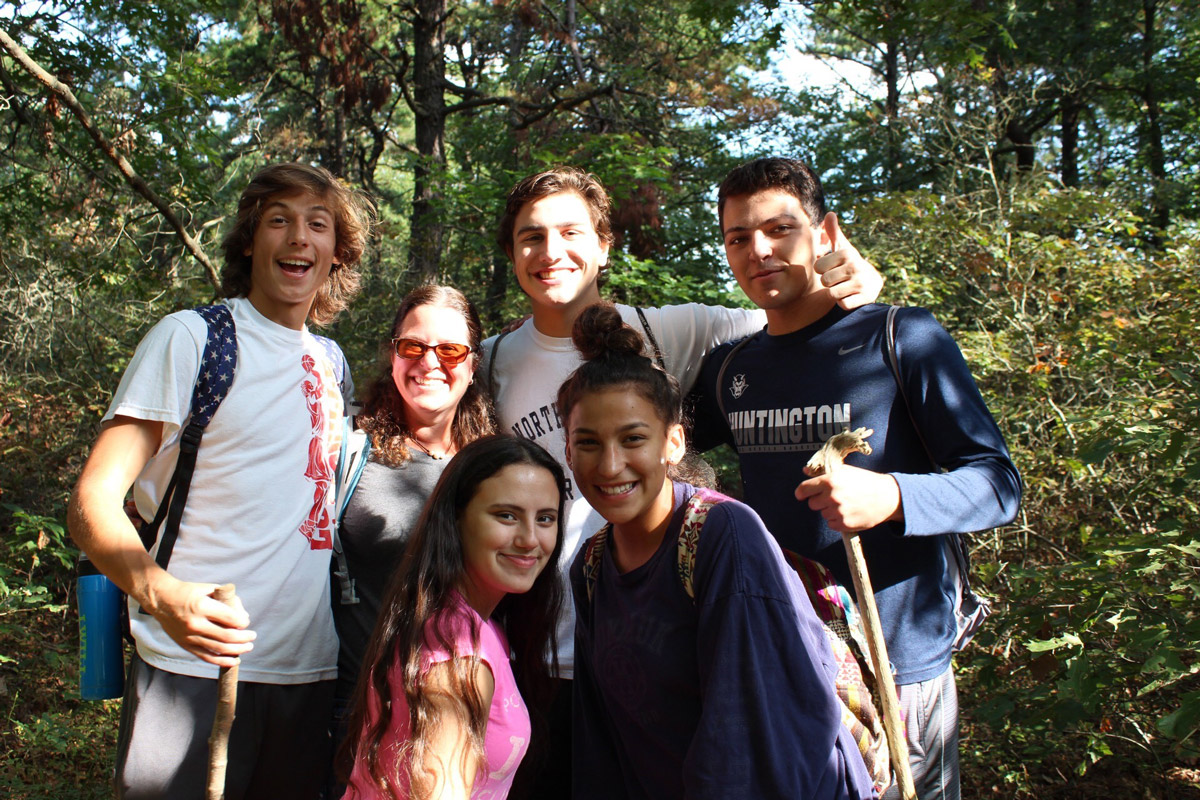Nothing beats hands-on learning as far as Stacey Byrnes and Nicole Cooper are concerned. So the two Huntington High School Advanced Placement Environmental Science teachers took their classes into the field at Oak Brush Plains State Preserve at Edgewood in Deer Park and Heckscher State Park in East Islip. The duo says it’s simply impossible to duplicate such experiences in a classroom.
“There is truly nothing that can replace hands-on learning,” Ms. Byrnes said. “At the preserve, we learned about primary and secondary succession, plant adaptations, invasive species and decomposition from our great friends the fungi. At the beach, we went seining where we found all types of marine life and learned about the natural and man-made shore protection.”
Edgewood State Hospital was erected in the early 1940’s on land carved out from the massive Pilgrim State Hospital property. It originally served patients suffering from tuberculosis and psychiatric disorders. The U.S. Army eventually commandeered the hospital and renamed it Mason General Hospital, operating the facility from June 1944 through December 1946, when it returned to state control. The Army housed German POWs there and treated US soldiers with battle induced trauma.
The massive main hospital building, which stood 13 stories high and was accessed via a gate and driveway on Commack Road was closed in 1969 after the advent and widespread use of psychiatric medications. The remaining 12 buildings that comprised the complex were shuttered in 1971. In the years that followed, huge fires and extensive vandalism reduced Edgewood to ruins.
The main building, which once housed thousands of patients and featured an all-copper French style chateau roof, was demolished on August 16, 1989. The property was then considered as the site of a domed stadium, super LIRR station, county hospital, senior citizen housing, hotel complex, court complex, condominiums, affordable housing, industrial park and even a produce market. In the end, political considerations led to the rejection of all proposals.
Today the Oak Brush Plains State Preserve at Edgewood totals 813 acres. It stretches into the towns of Huntington, Babylon and Islip. “The preserve is dominated by pitch pine-scrub oak barrens, a rarely occurring community characterized by dense shrub thickets, compared to more tree dominated pine barrens communities that occur across Long Island,” according to the state Dept. of Environmental Conservation. “These unique barrens occur in only three places on Long Island, six in the State, and are considered a globally rare habitat. The barrens are interspersed with stands of big tooth aspen as well as grasslands that have emerged on formerly developed portions of the property.
“The NYS DEC environmental educators guided us through our day and provided us with informative tips along the way,” Ms. Byrnes said. The Huntington students were a very inquisitive bunch.
“We started our day at the Oak Brush Plains State Preserve at Edgewood,” Ms. Cooper said. “This area is extremely unique in that it shows primary and secondary succession occurring at different rates. This means that after the hospital was torn down, the forest began to reclaim the land. It is now a young forest and very interesting to see some of the old artifacts being taken over by nature. We learned about a multitude of plants and fungi and their everyday applications.”
Although most of the hospital buildings have been demolished, the trained eye can still detect what was once on the property. For example, there are extensive stretches of concrete roadways, piles of red bricks and twisted metal from fallen structures, remnants of LIRR spurs dissecting the property and even manhole covers that once provided access to the sprawling series of underground tunnels that still exist.
The Huntington AP Environmental Science students learned how nature can reclaim areas and how wildlife quickly moves in when humans move out. “The preserve is home to rich populations of many common animal species, including several types of warblers, red-tailed hawks, eastern cottontail, red fox and hognose snakes. Interestingly, there are no resident deer at the preserve,” according to the DEC. “Several species of rare invertebrates are present, too, including the coastal barrens buck moth.”
Once their studies at Oak Brush Plains State Preserve at Edgewood wrapped up, the group boarded their bus and headed over to the 1,600 acre Heckscher State Park. After eating lunch, the teenagers put on waders and took a giant seine net into the water. They caught local fish species and were able to identify and observe them up-close.
The teenagers enjoyed their time at the beach, although the time proved to be a lot of hard work for many of them. What turned up in the seine net was often fascinating.
Heckscher State Park is utilized by hundreds of thousands of Long Islanders annually. It has everything from picnic areas to soccer, cricket, lacrosse and softball fields. There are sandy beaches and boat launching facilities. There are even trails for bike riders and walkers. The grounds are loaded with assorted wildlife.
“Heckscher State Park was once the 19th century estates of George C. Taylor and J. Neal Plum,” according to the Office of State Parks, Historic Preservation and Recreation. “William Nicoll, founder of the Town of Islip, originally built his estate on this property. The park was bought by the State of New York using a donation by the affluent August Heckscher with strong opposition from wealthy local residents. It was one of Robert Moses’ most difficult fights to obtain land for public recreation on Long Island. Only with assistance and support from then Governor Alfred E. Smith was Moses able to close the deal on this beautiful property fronting the Great South Bay.”




